YouTube is the second most used search engine in the world, second to Google.
That means that there’s a pretty big (okay—HUGE) chance that your customers are watching YouTube. They’re using the video platform to find entertainment and education.
Depending on your business, your YouTube strategy probably involves a little bit of both. For example, we love teaching about email campaigns to boost conversions… while one of our managers wears a flamingo shirt.
But, what’s a YouTube channel without a strategy?
A very bold idea. While we love bold ideas, we love strategy just as much. What do all great strategies have? METRICS!
Metrics tell us when we’re doing well and when we’re doing badly. They’re our lighthouse when we’re at sea trying to find the mystical land of Traffic and Conversions.
If you’re looking to grow your YouTube channel, here are the 5 most important metrics to track your growth.
NOTE: The first 4 metrics can be tracked in your YouTube analytics. The last metric can be tracked with a link tracker.
#1: Watch Time
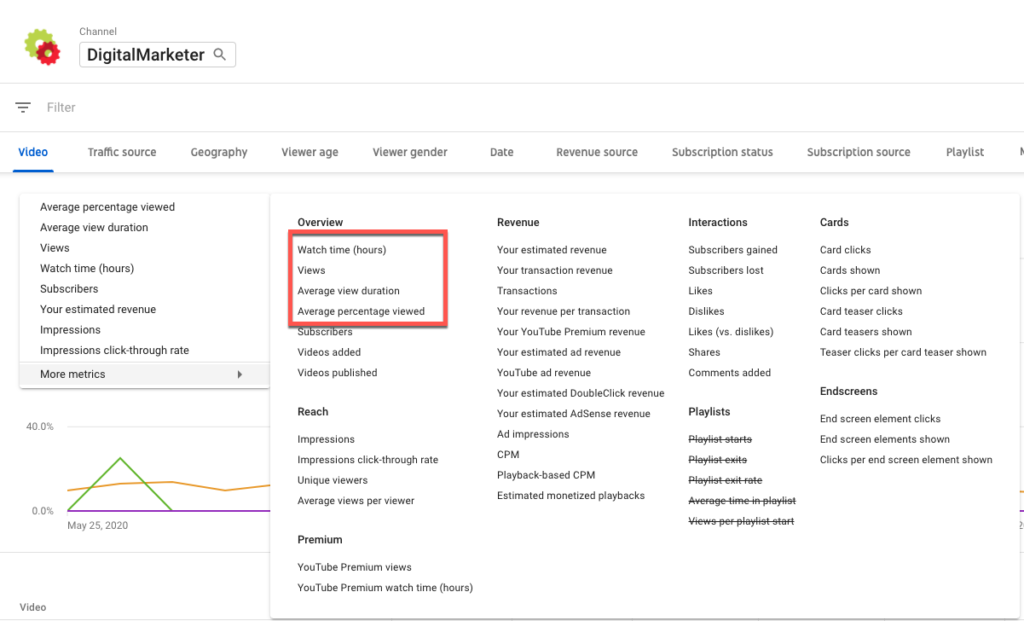
Watch time is the amount of a video somebody watches. On YouTube, they’ll average your watch time for each video and tell you in your analytics. Don’t be scared if you find that your watch time isn’t 100% for every video. This is kind of like getting a 100% conversion rate—you’re going to have to be so perfectly niched that you create the holy grail of marketing success.
That can happen… but don’t short yourself if it doesn’t.
Watch time is an extremely important metric for your YouTube growth because it’s telling you how well your content is answering your viewer’s problem. If viewers don’t feel like they’re getting what they were promised in your title and thumbnail, they’re going to click off of your video. On the reverse, if they feel like you’re educating them and keeping their attention—you’re going to have great watch time metrics.
For example, if we noticed that our watch time was lower than 40% for a video, we’d start to really evaluate that video’s template and see what needs to be done to improve that watch time. Maybe our introduction was too long or the amount of time spent talking about the topic of the video wasn’t concise enough, and viewers decided to go elsewhere.
We’re always going to aim for an above 40% watch time on each video we publish, and use the videos that perform well to show us what general template to follow with future videos.
#2: Impressions Click-Through Rate
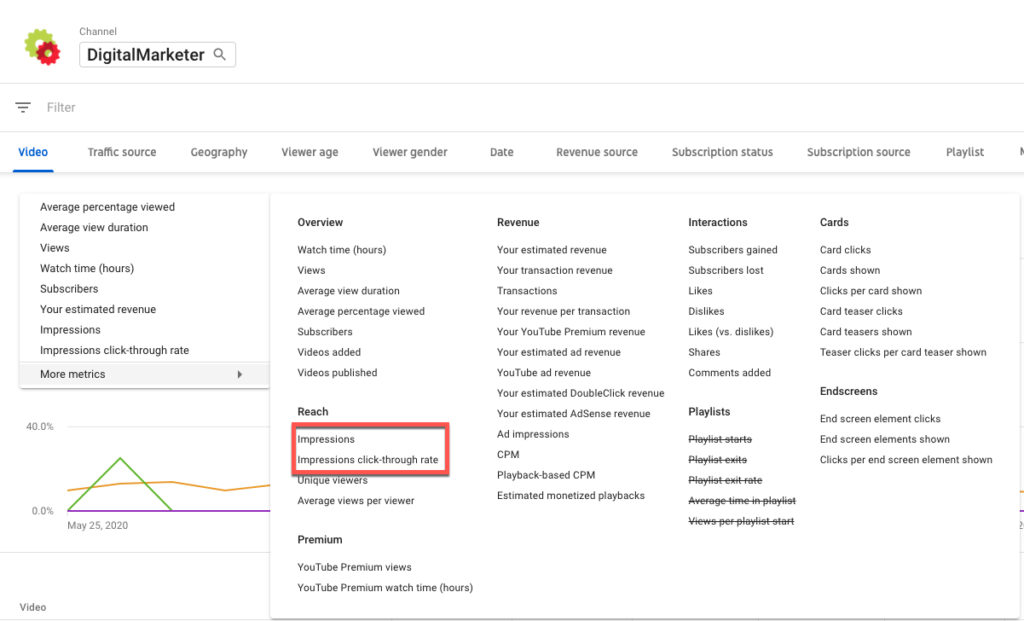
Impressions click-through rate tells you how often a video is being clicked. You can equate it to the click-through rate (CTR) of a Facebook ad. For every set amount of people who saw your video in their feed, how many clicked to watch it?
When your videos get a high CTR, you did something really well. That could be that your title nailed your customer avatar’s pain point and your thumbnail was eye catching and had the right information on it.
As most YouTube stars would tell you—it’s all in the thumbnail. Changing your thumbnail can have drastic effects on your CTR. If you’re constantly seeing a less than 5% CTR on YouTube, start to change the creative of your thumbnails to see if you can improve them.
For your videos performing well, take note of their thumbnails and titles and how you can replicate that in the future. Remember, your metrics are here to show you the way… let them guide you.
#3: Most Popular Videos
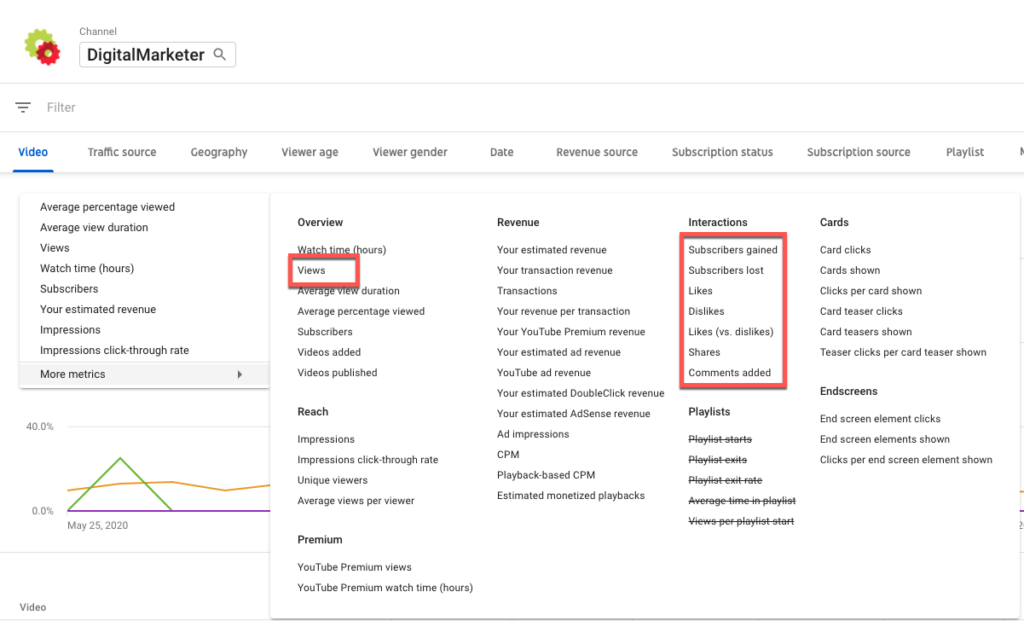
You’ll find your most popular videos by going to your YouTube page and clicking on the filter option, and choosing “Most Popular.” This will show you your most popular videos in descending order, so you can see what videos are carrying the weight for the rest of the team.
This metric is going to help grow your YouTube channel by being a direct line of communication between yourself and your customer avatar. What content that you created are they LOVING… and how can you create more of it?
Another bonus about this metric is that you can also see what your competition’s most popular videos are. This will give you more content ideas as well as validate what content your viewers want to see. If they have a similar audience to yours, you know that your audience also probably wants to see that content.
#4: Audience Information
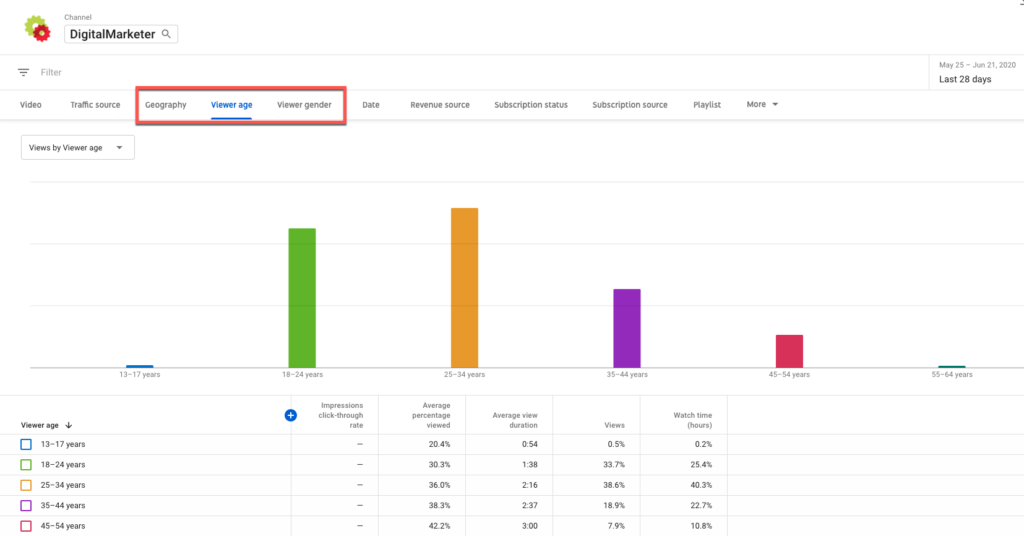
Audience information is essential knowledge for anybody trying to grow a social media following or business. Knowing your audience is key to creating the content they want—and to making sure you’re creating content for the right people.
There are 2 metrics to look at here, the first is your internal traffic sources. This tells you how many viewers came to your video by having it suggested to them, by finding it through YouTube search, by choosing it on your channel, etc.
The second is to look at your external traffic sources. How many viewers came from a Google search, Facebook, a website, or a link in an email they received?
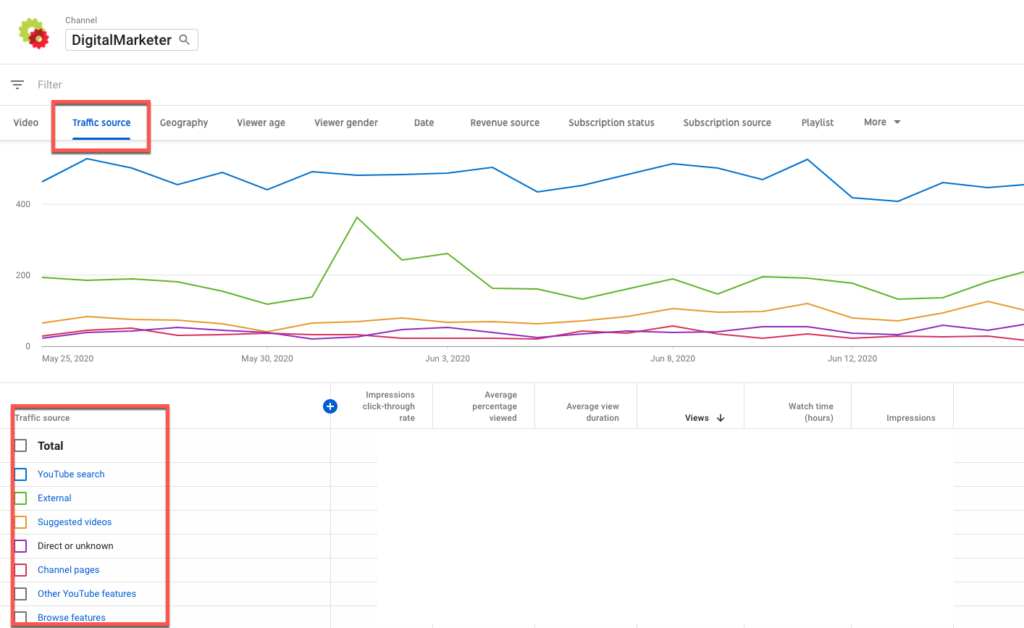
Knowing these metrics tells you where your audience is coming from, and what you’re doing right or wrong. For example, if you’re seeing that a lot of your views are coming from YouTube search—you’re doing a great job at creating videos that your customer avatar is specifically looking for.
If you’re sending an email blast to 100,000 people every week with your recent YouTube video and you’re not seeing any sources coming from email—your email subscribers aren’t taking the bait in your email to watch your videos. If it’s important that they watch them, it’s time to create a new strategy.
#5: Actions Per Video
Actions per video are the number of viewers who clicked the link that you asked or told them about in the video. This is the only YouTube metric that can’t be tracked with YouTube analytics—but it is so important to make sure you’re paying attention to it.
Having one million views on a YouTube video is great, but if nobody clicked through to your lead magnet, then how successful was that video?
For example, you may have a video that is one of your least popular videos, but it has a 15% CTR for your call to action. While the video title or thumbnail isn’t meeting the needs of an average viewer, your call to action is.
This tells you that how you framed your call to action or the offer you created for that video are really good. You should try and do that again.
To track this, you’d use a link tracker to see how many viewers clicked the link you placed on the video or in your description (or both!). Then, you’re going to see how many people viewed the video. Divide the number of viewers who clicked by the total number of viewers and multiply by 100 to get your link’s CTR for the video.
Your YouTube metrics are going to be your lighthouse, guiding you towards building your following and growing the awareness, subscribers, and customers of your business.
Use these metrics to grow your YouTube channel and sail smoothly into the port of the mystical land of Traffic and Conversions.
We’ll see you there.
The post The 5 Most Important Metrics to Track Your YouTube Growth appeared first on DigitalMarketer.
About us and this blog
We are a digital marketing company with a focus on helping our customers achieve great results across several key areas.
Request a free quote
We offer professional SEO services that help websites increase their organic search score drastically in order to compete for the highest rankings even when it comes to highly competitive keywords.
Subscribe to our newsletter!
More from our blog
See all postsRecent Posts
- Web Hosting September 26, 2023
- Affiliate Management September 26, 2023
- Online Presence Analysis September 26, 2023


